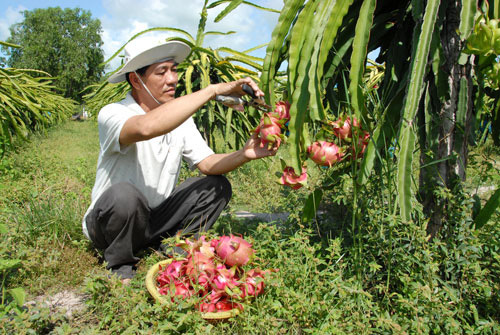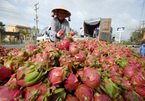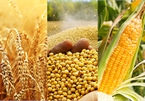Nguyen Quoc Trinh, chair of the Long An province’s Dragon Fruit Association, on March 20 said the sale of dragon fruit is going better as China has resumed imports.

The red flesh dragon fruit price has increased to VND18,000 per kilogram, and white flesh to VND14,000. The prices are still below expectations because these are off-season products, but they are acceptable as exports to other markets, including the US, EU and South Korea, have become stuck.
“If the epidemic had not happened, the prices would be higher because this year’s output is 50 percent lower as a result of drought and saline intrusion,” Trinh said.
Though the Chinese market has shown signs of improvement, farmers and exports still are cautious.
| Signs of Vietnamese farm export recovery have appeared as the Chinese market has begun importing products again. |
As the Chinese market is still unstable, Trinh said dragon fruit farmers need to continue to diversify export markets.
“Cooperatives have signed many contracts on supplying dragon fruit to supermarkets to develop the domestic market,” he said.
Dragon fruit is being classified at source and a part of the output is dried or used to make fruit juice and processed products. The products are expected to sell well if China can contain the epidemic.
As for catfish, Ong Hang Van, deputy director of Truong Giang Seafood in Dong Thap province, has confirmed that Chinese businesses began buying catfish again two weeks ago. However, the sales were just 30 percent of the normal level because their logistics system has not been fully recovered.
“We think trade with China will only return to normal by the third quarter,” Van said, adding that the Chinese market consumes 35 percent of Vietnam’s catfish exports.
To stabilize the markets, large companies export products directly, not through intermediaries, which helps ensure quality.
Nguyen Lam Vien, chair of Vinamit, which makes dried fruit products, also said the Chinese market has begun recovering, but it is still unstable.
“In general, farm produce and food will recover sooner than other products. However, we need to wait more months to come to aconclusion,” Vien said.
China is facing the same problem as Vietnam – new infection cases from overseas. The country will still have to take drastic measures to control the epidemic, which affects goods circulation.
“The Chinese market now has high demand for high-quality products that are good for health,” he said.
Regarding rice exports, Vietnam hopes exports to China may be higher than the 500,000 tons in 2019.
Chi Mai

Vietnam seeks new markets for farm produce
The Ministry of Industry and Trade (MOIT) has asked its Vietnam Trade Offices (VTRs) overseas to help connect Vietnamese enterprises with foreign partners to boost farm produce exports.

Vietnam commits to buy US$3 billion farm produce to balance trade with US
The import staples include cow, wheat, fruit, corn, soy, and animal feed which will be purchased in the next two to three years.
 Signs of Vietnamese farm export recovery have appeared as the Chinese market has begun importing products again.
Signs of Vietnamese farm export recovery have appeared as the Chinese market has begun importing products again.